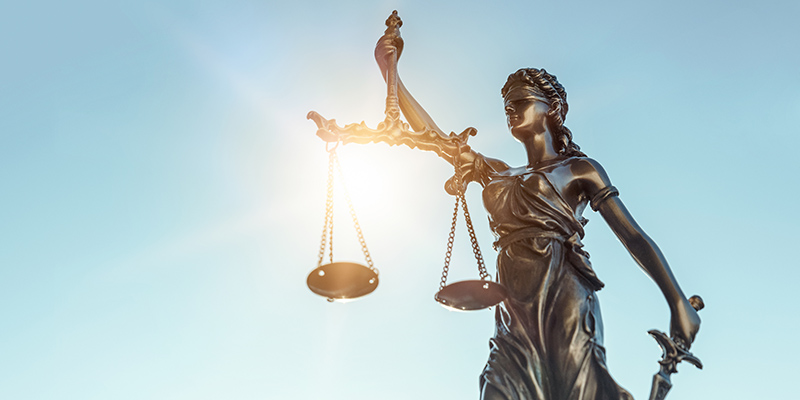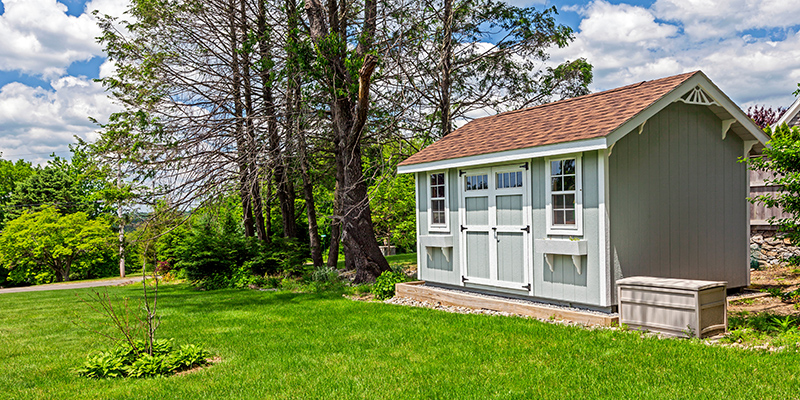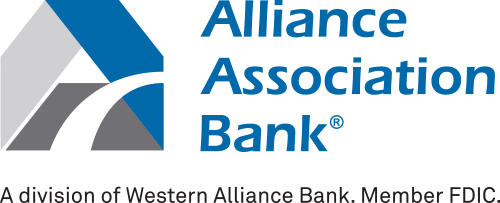The History Of Labor Day: What It Truly Means
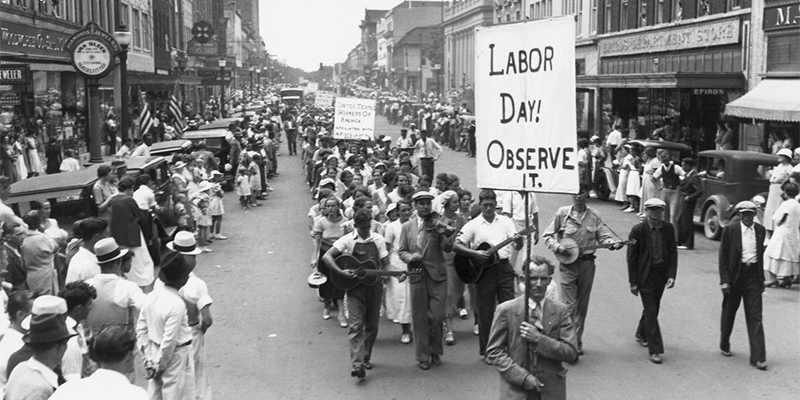
Labor Day is just around the corner. And while this holiday allows Americans to enjoy a long weekend in September, it is important to know why we even celebrate it in the first place. To better appreciate the meaning behind it, you must understand the history of Labor Day.
Browse By Category
Sign up for Our Newsletter
Labor Day is just around the corner. And while this holiday allows Americans to enjoy a long weekend in September, it is important to know why we even celebrate it in the first place. To better appreciate the meaning behind it, you must understand the history of Labor Day.
What Is the History of Labor Day in the United States?
Labor Day is a federal holiday that falls on the first Monday of September every year. Since it takes place on a Monday, Americans are given an entire weekend to celebrate the holiday, commonly known as Labor Day Weekend.
But, this holiday did not start out as a celebration. In fact, the history of Labor Day is rather dark.
It began in the late 1800s, at the pinnacle of the Industrial Revolution in the United States. During this time, work hours averaged 12 hours a day, with most Americans working 7 days a week just to make ends meet. Children as young as 5 years old would put in their hours in factories, mills, and mines, even though some states had restrictions in place again child labor. And these young workers would earn a mere fraction of the salaries offered to adults.
As if low wages were not enough, the working conditions at the time were often hazardous, too. The work environments did not afford workers fresh air or sanitary spaces. Breaks were either limited or non-existent. And these conditions disproportionately affected the poverty-stricken and the immigrants.
Agriculture once reigned supreme, but manufacturing quickly overtook the American economy. It was also at this point that labor unions, which first sprouted in the late 18th century, swelled in popularity. These unions also started to become more vocal about labor issues. Strikes and rallies were held, protesting poor working conditions. The unions urged employers to pay workers more fairly and negotiate hours.
Unfortunately, many of these protests did not remain peaceful. One of the most infamous of them is the Haymarket Riot that took place in 1886. During this riot, many Chicago workers and policemen were killed.
The First Labor Day Parade in the United States
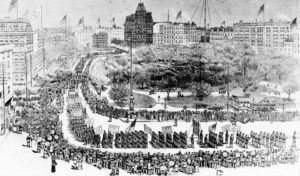 The first Labor Day parade took place before the Haymarket Riot. In New York City, on September 5, 1882, 10,000 workers marched from City Hall to Union Square. These workers took unpaid time off from their jobs to participate in the march.
The first Labor Day parade took place before the Haymarket Riot. In New York City, on September 5, 1882, 10,000 workers marched from City Hall to Union Square. These workers took unpaid time off from their jobs to participate in the march.
The idea of a workers’ holiday took off. Soon enough, industrial centers throughout the United States followed suit. Several states even officially recognized the holiday.
However, it was not until 1894 — 12 years after the march to Union Square — that the federal government legalized the holiday. What triggered this was an event in Chicago that served as the catalyst for several riots. The Pullman Palace Car Company had fired union representatives and cut wages. Workers of the company went on strike in protest. This eventually led to a boycott of Pullman railway cars, which had a detrimental effect on railroad traffic across the country.
To halt the Pullman Strike, the federal government sent troops to Chicago. The resulting series of riots brought on the deaths of more than a dozen Pullman employees.
What Is the Meaning of Labor Day?
After understanding Labor Day history, it is easy to see why the holiday is so important. Labor Day is a celebration of the achievements and contributions of American laborers. It was created in honor of workers and carries meaningful weight. While many Americans pay tribute in different ways, we must never forget the history of Labor Day.
Who Started Labor Day?
It is difficult to say who exactly started Labor Day. Many attribute the holiday to Peter J. McGuire, who co-founded the American Federation of Labor. However, others credit Central Labor Union secretary Matthew Maguire with coming up with the idea for the holiday. It is worth noting that both men attended the first Labor Day parade in New York City in 1882.
Regardless of who founded Labor Day, it is the meaning behind the holiday that truly matters. The legalization of the holiday at the federal level was the culmination of years of unrest among laborers of the time period. And history is what crafted the labor laws that exist today.
How Do People Celebrate Labor Day?
 There are many ways Americans celebrate Labor Day. Some go all out by throwing or attending parties, while others choose to simply take the day off and spend time relaxing at home.
There are many ways Americans celebrate Labor Day. Some go all out by throwing or attending parties, while others choose to simply take the day off and spend time relaxing at home.
Families often head to the park for a nice picnic or celebrate at home with a backyard barbecue. Many cities and municipalities organize parades as a tradition and in commemoration of the first Labor Day parade in New York City.
As Labor Day marks the unofficial end of the summer season, it is not surprising that people would want to go out with a bang by doing all the summer activities they will miss during the cold months. For many, it also signals the beginning of the school year, so families likely want to make the most out of the holiday with kids.
Historically, these activities do not stray too far from the initial proposals for the holiday celebration. Later on, well-known men and women would give speeches to place emphasis on the significance of the holiday from an economic and civic standpoint.
Appreciating Labor Day
The history of Labor Day certainly was not all smooth sailing. In fact, the origin of the holiday is grimmer than some people would want to imagine. However, American labor has played a great role in raising the prestige of the country and definitely increased the standard of living. As such, it is fitting that all citizens set aside a single day out of the year to pay tribute to American workers.
RELATED ARTICLES:
- 5 Ideas To Celebrate Thanksgiving In Your HOA
- 9 HOA Fourth Of July Celebration Ideas To Bring The Community Together
- 9 Special Ways To Celebrate Memorial Day With Family
Trending Now
Related Article
Sign up for Our Monthly Newsletter
Sign up below for monthly updates on all HOA Resource



